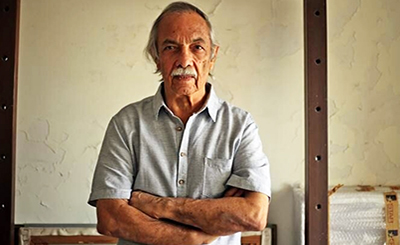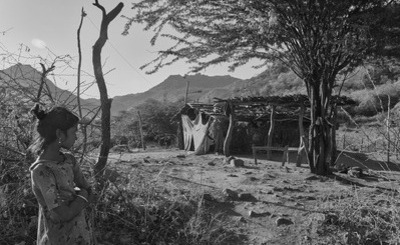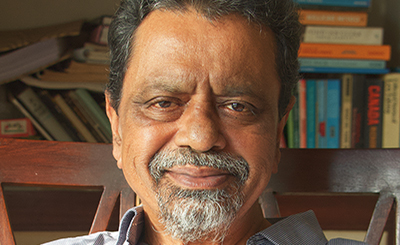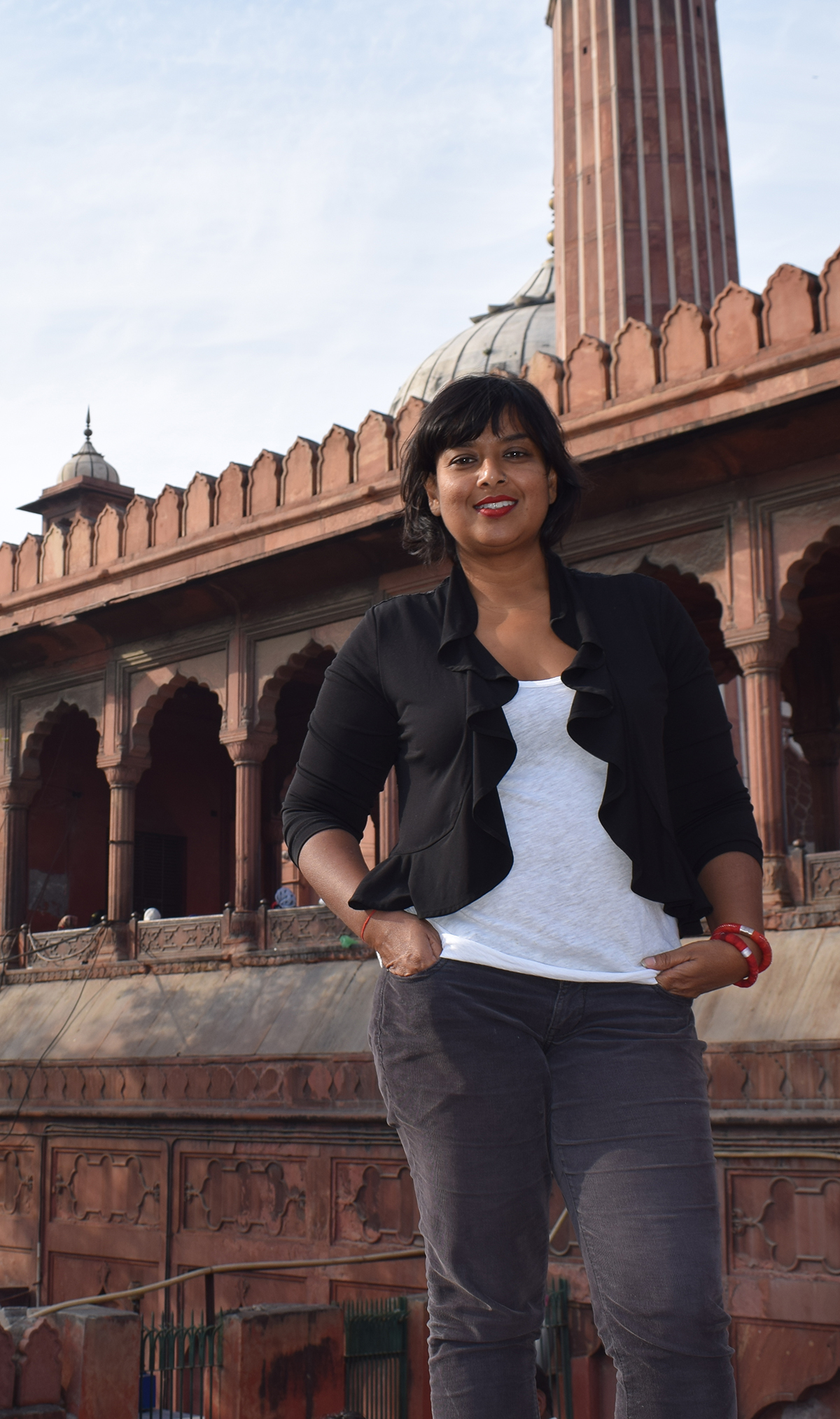
Nayomi Munaweera. Photos: Shireen Quadri
Sri Lankan-American writer Nayomi Munaweera, author of two novels, says she’s more of an ‘organic writer’. She says she doesn’t really try to shape her stories too much because it is going to come in its own way
Sri Lankan-American writer Nayomi Munaweera’s second novel, What Lies Between Us (Pan Macmillan, 2016), won the “Best Novel in English” award at the 60th State Literary Awards held in September 2017 to honour best writing from Sri Lanka in Tamil and English.
Munaweera was born in Sri Lanka and grew up in Nigeria. She emigrated with her family to the US in her early teens, and now lives in Oakland, California. Her first novel, Island of a Thousand Mirrors (Hachette), set during the decade-long civil war in Sri Lanka, is the story of two girls, Yasodhara and Saraswathi — one Sinhala, the other Tamil — who navigate their histories, sibling rivalries and adolescent heartbreaks, the burdens of exile and belonging, and the harsh demands of survival.
As a child in idyllic Colombo, Yasodhara’s and her siblings’ lives are shaped by social hierarchies, their parents’ ambitions, teenage love and, subtly, the differences between Tamil and Sinhala people; but the peace is shattered by the tragedies of war. Yasodhara’s family escapes to Los Angeles. But Yasodhara’s life has already become intertwined with that of Saraswathi, who is living in the active war zone of Sri Lanka, and hopes to become a teacher. But her dreams for the future are abruptly stamped out when she is arrested by a group of Sinhala soldiers and pulled into the very heart of the conflict that she has tried so hard to avoid — a conflict that, eventually, will connect her and Yasodhara in unexpected ways.
Island of a Thousand Mirrors won the 2013 Commonwealth Book Prize for the Asian Region and was longlisted for the 2012 Man Asian Literary Prize and the Dublin IMPAC Award.
What Lies Between Us is the story of Ganga, a young girl, who grows up in Sri Lanka, but had to emigrate to the US with her mother after they are ostracised by their community in the wake of one terrible night. In America, Ganga must negotiate the challenges and thrills of an American teenage girlhood. She navigates immigrancy and thrives. She fulfills the “American dream” by graduating from college, moving to San Francisco and working as a nurse, yet beneath the surface the “scars” of her past continue to haunt her. When she meets Daniel, a handsome, charismatic man and falls deeply in love, it appears that she has found her happily ever after. Instead, the secrets continue to corrode and an accidental pregnancy causes the marriage to further unravel. She cannot resist an encroaching darkness, and she finally commits one terrible act.
The Punch met Munaweera when she was in New Delhi earlier this year, along with her husband, Whit. In this interview, she talks about the long struggle to get her first novel, Island of a Thousand Mirrors, published, the genesis of her second novel which offers a much closer and intimate look at one character, her sense of place as a writer, slipperiness of memory and more. Excerpts from an interview:
The Punch: How and when did you move from Sri Lanka? How did your first novel, Island of a Thousand Mirrors, come into being?
Nayomi Munaweera: I was born in Sri Lanka in 1973 and in 1976 my family moved to Nigeria. We were there for economic reasons. In 1984, there was a military coup and, therefore, we had to leave. We were part of this emigrant community. I had many Sri Lankan friends. But we couldn’t go back to Sri Lanka because the civil war had started there a year earlier. So, we had to figure out where to go. Luckily, we had relatives in Los Angeles and we moved to LA.
I grew up as a reader. I read everything. I did my undergraduate and graduate studies in English and when I got to the dissertation, I really couldn’t write an academic work. So, what started taking shape was the beginning of this novel. It was quite a struggle at that moment. Eventually, I dropped out, moved to the Bay Area (San Francisco) and started writing in 2001. I didn’t know I was writing a novel. They were all fragmented pieces. It took a very long time before I realised that’s what it was, that it was a novel about the war and the idea of being an emigrant in America.
Trying to write about a war that I hadn’t lived through was very difficult. I was writing from 2001 to 2009, the year the war ended. I could finally finish my book and send it out to big publishing houses. At that point of time, I had an agent. I sent it out but nobody wanted it. All the American agencies declined. This was a very difficult moment, but not devastating in a way since publication seemed to be outside the rim of possibility. It doesn’t feel like something would have actually happened. So, then I started writing a different novel which I haven’t published. In about 2011, I reconnected with a childhood friend I had grown up with in school in Nigeria. She had moved to Sri Lanka and she asked to try the Perera-Hussein Publishing House there. When I approached them, they looked at both the manuscripts and they wanted the first. They published it in 2012 and then it came out in India. It was up for the DSC Prize for South Asian Literature. So, for me, it was in India where things started taking off in a big way. Sri Lanka is booming, but the readership in English is still small. It was because of India that America got interested. They (St Martin’s Press) offered me a two-book deal. Island of a Thousand Mirrors came out in 2012 and What Lies Between Us came out in 2016. I think it’s really about perseverance and not giving up. Island of a Thousand Mirrors won the 2013 Commonwealth Book Prize for the Asian Region and was longlisted for the 2012 Man Asian Literary Prize and the Dublin IMPAC Award.
The Punch: How did you decide on its structure? How crucial was the backdrop of the civil war?
Nayomi Munaweera: Very early on, while I was writing for a while, I didn’t know that I was writing a novel about the war. So, I flexed my muscles and tried to figure out what this book was going to be about or, even, if it was a book or a short story. I didn’t really know. Recently, I found very early drafts of the book and they are completely different. There are two roommates in San Francisco: a black girl and a white girl. It was about race but, at some point, it turned and I started thinking that more than anything else I connected with the characters and I realised I was writing about the war. The early part of the book has a lot of back story. I think a lot of South Asian writers do this where they dwell on the genealogy of the character. American writers almost never have to do this. They never have to introduce characters that way. I heard some reader say that it’s a little confusing, especially for Western readers, as there’s a lot of back and forth early on, but to me it feels very natural and it feels like the proper introduction to the story. It’s also the moment when the British are leaving and they have left this mess behind. They’re leaving with the spoils of the empire, they are leaving behind all these tensions in Sri Lanka. They’re leaving behind the Tamil-Sinhalese conflict which was really based on language. Also, while writing this book, I realised at some point that I didn’t want to focus very heavily on politics because politics for the common readers is not really interesting. So, the initial manuscript of Island of a Thousand Mirrors was about four times bigger. I cut it down, taking all the politics out. What I was left with, what I really became interested in at some point was the way that these people feel. That’s the most important thing. When you are reading, you want to feel empathy, you want to go on their journey and you want to connect with the characters.
I recently read an amazing novel, Anuk Arudpragasam’s The Story of a Brief Marriage. Anuk is a young Sri Lankan writer. And the novel is about a day in the life of these characters in the north in the backdrop of the war. He does it better than anyone. My book is good, but his book is so much better about the war. It’s really the best book about the war that anyone has written. He’s not paying attention to any other politics or leaders. It’s just based on the bodies of these two characters. And that’s a very powerful thing because reading about the physiology of characters, you can’t help but be taken on the journey. You’re almost held by the hand and you go on that journey. At some point, I realised that’s what I had to do.
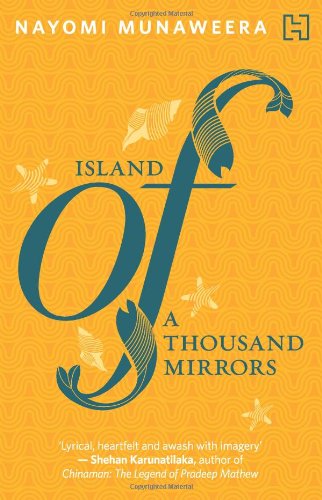
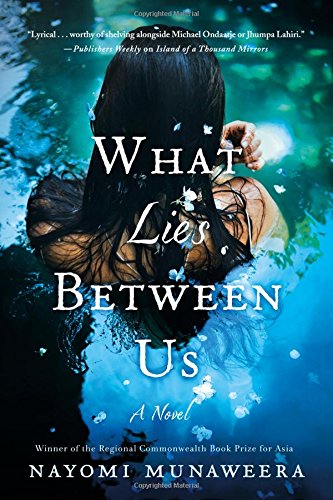
Saraswati, the Tamil character in my book, turned out quite late in the process. I was afraid to write about her because as a Sinhalese person who had grown up in the West, taking on a Tamil perspective in the north was very daunting. At the same time, there was no way I could tell the story of the war without taking on that perspective. So, then, you have to enter that. And I was writing it before 2009. There was very little information about the Tigers because they would kill themselves. So, I did as much research as I could and then it was really an act of imagination, hoping that it would land in the right place. And somehow it did. I haven’t had a lot of complaints from Tamil people in Sri Lanka which makes me very happy. When the book first came out in Sri Lanka in 2012, the government was still controlling the media and they were making journalists and writers disappear. So, they sent their editors to the book launch and the editors stood up and shouted, ‘How dare you write this?’ I asked them if they had read the book. They said, ‘We don’t have to read the book.’ I told them they had to read the book or we could not have that conversation. So, there was a lot of anger more on the Sinhalese side than the Tamil side, which I find quite interesting. It has dissipated quite a bit now that the war is over and things are supposed to be much better. I’ve been to Jaffna a few times. People at the university there are teaching my book which is really a big deal for me as a writer. I would never have imagined that this would happen.
The Punch: How important is the sense of place to you as a writer?
Nayomi Munaweera: I think it’s incredibly important. As an immigrant writer, I was trying to evoke Sri Lanka. The interesting part of this is that I grew up going back to Sri Lanka every year, throughout all the years in Nigeria and all the years in America, until I was writing the book. The majority of that decade that I was writing that book, I didn’t go back to Sri Lanka for some personal reasons. Also, a part of me didn’t want to go back. I was writing about a period and I didn’t want to enter what it would feel like to be there because it would be a little bit too ambiguous. I was relying a lot on memory, dream and reading. I don’t know if it was good or bad, but I think I was able to catch these little things that people in Sri Lanka wouldn’t have caught. In the same way, I might not see the landscape I belong to in California in the way that somebody that came from the airport is going to see, noticing very small nuances. May be it’s one of the ways where the writer who lives outside has some entry into the place and the feeling of the place because if we are in a place for a long time, we no longer see the place the same way. The emigrant writer is in a strange position because they live on the inside-outside. But the beautiful thing is this ability to see anew.
The Punch: What Lies Between Us, your second novel, straddles a different territory which has surprised your readers. What was the genesis for the story?
Nayomi Munaweera: What Lies Between Us actually begins at the end, which is the structure I really loved. The woman, the main character who is unnamed until the end, has committed really terrible crime and she says she won’t tell you her name until she tells you her story. So, she’ll reveal her name at the end. And she wants you to know that she’s done something reallly bad. She’s in jail and she’ll take you through the course of her life to tell you what she’s done.
In the first book, there was so much about the big story of the country, the people and the nation. For the second book, I wanted to do something very, very intimate. I wanted to write in first-person, present tense, enter one character and stay with them for a long time because it felt like the opposite of the first book and a challenge. The second challenge was: Could I tell the story of a character who has done something really, really terrible and have readers empathise with her? Could I make people go on a journey again? Because everyone is going to have sympathy for characters caught in a war. You’ll be heartless if you don’t. My first idea was that she would have killed her husband who was beating her, but then I thought it was too easy and everybody would go on that journey. Then, I started thinking about maternity and motherhood. Now, we are in a realm that’s much more dangerous, especially in a South Asian context, it’s the kind of stuff that isn’t talked about. I was really interested in exploring the secrets of the family. In South Asia, we are not supposed to talk about what happens in the confines of the family. I explore issues around maternity in this book. It offers a much closer and intimate look at one character.
The Punch: Were you also interested in exploring the slipperiness of memory? Do you think the narrative could perhaps be a bit more unreliable?
Nayomi Munaweera: Absolutely. In the first book, I didn’t question memory in the same way. Things happened and they happened when you were there and you witnessed them. In this book, it’s really an exploration of how slippery memory is. As you read about the event of her childhood, you have a certain relationship with those facts. What I was really trying to explore here is the fact that the memories from our childhood are incredibly fragmented and we might think that we have them down, but that might be due to something that we saw, may be a photo or a film. It’s sort of stitched together in such a way that we know it’s not really pinned down upon the way we think it is. Also, because my characters are trauma victims, memory gets so much more complicated. Their memory is not concrete. For instance, there are these studies on 9/11. The responses of the trauma victims, who are interviewed a day after, a week after and a year after, are significantly different from right after the events. They used to think that the trauma would make their memories concrete, but it’s actually the opposite. So, in the second novel, I’m playing with all of those ideas.
The Punch: As it’s a dark and grim story, were you concerned about its reception? As a writer, should one have these concerns at all?
Nayomi Munaweera: I suppose it’s a darker story, but it’s difficult for me to say that. If we are only talking about deaths, then in the civil war the death toll was more: hundreds of people died. Is that darker than one person’s tragedy? It is tough for me to answer. In the first book, there is a death and the death is devastating; the death of a sister is terrible. The second book also centres around death. Perhaps with this, we’ll have a harder time because the death is of someone more innocent. So, I don’t think it’s a darker book. I’m not interested in writing the same book ever again. I think most good writers that I admire are not interested in writing the same books. As a writer, a book is an obsession that you cannot get rid of. You don’t really pay attention to what people want and what publisher wants. I got very lucky because the publisher of the first book gave me a two-book deal. They bought the second book based on a paragraph. When I sent this to them, I think they were a little concerned, but they put it out and it’s doing really well. I think it’s also a book that takes on really big things like maternity, childhood secrets and child abuse. It’s easier for readers or people to deal with the big tragedy — the civil war — because then the enemy is out there. And since it is not the case within the family, it’s a little bit easier.
I’m more of an organic writer. So, I let the story take the shape that it needs to take. I don’t really try to shape it too much because the narrative is going to come in its own way; a lot of it is very mysterious but it emerges in the way that it does. So, I don’t have a lot of control over it. I got very lucky with the second book. The narrator started talking to me early and she has a very strong voice. She just started talking and it doesn’t mean that I don’t do a lot of work and kill myself over writing it, but it emerges in the way that it wants to.
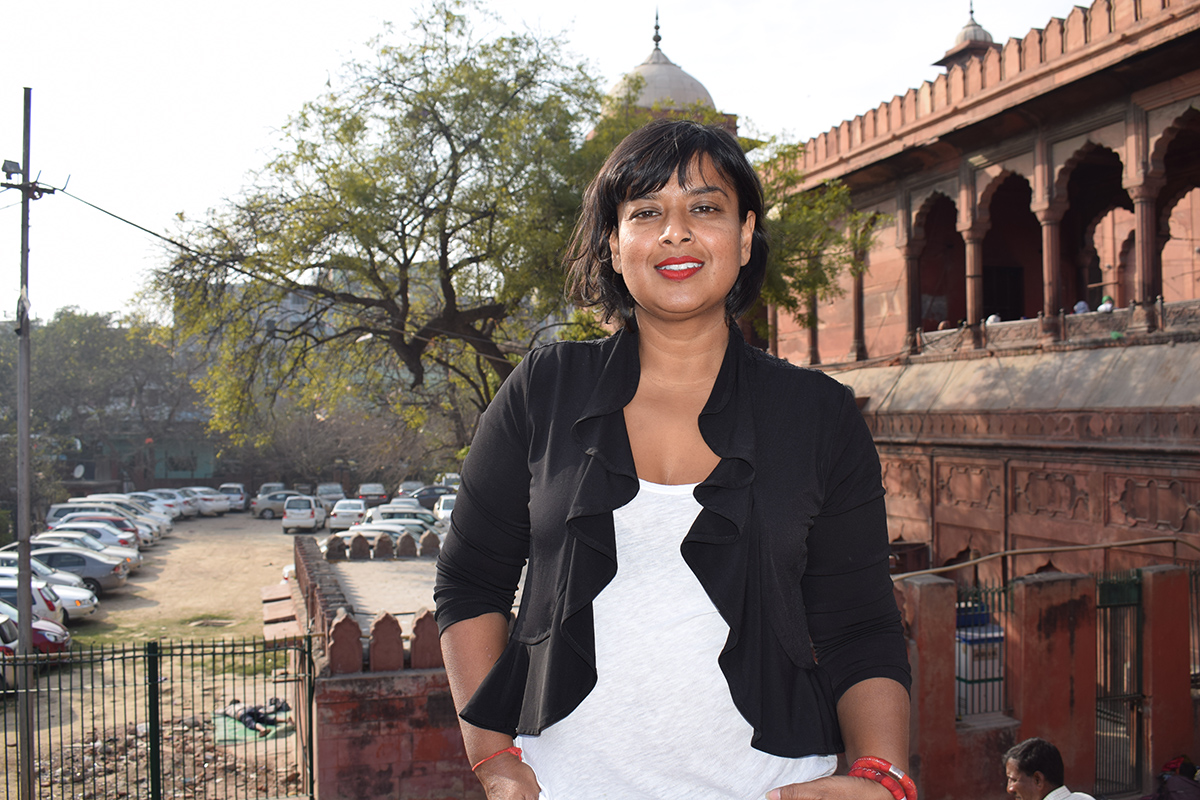
The Punch: Sri Lanka has a small but very interesting pool of writers — from Michael Ondaatje to Romesh Gunesekera. Could you talk about some of your literary influences and how they have changed over the years?
Nayomi Munaweera: Thank you so much for saying that about Sri Lankan writers. That’s wonderful to hear because a lot of my influences are actually Sri Lankan and Indian. You mention Michael Ondaatje. He’s been a huge influence, just like Salman Rushdie has been. He’s somebody I read in graduate school and his density of language is incredible, especially his early books. Then, Arundhati Roy. Shyam Selvadurai, a friend, is amazing. The interesting thing about it is that growing up in America, I didn’t have this idea that I could be a writer. This is not something that you think about and more than that you just didn’t see yourself in print, like you didn’t see brown people in print unlike in the subcontinent.
Anita Desai was a huge influence. I haven’t even thought about her for so many years, and then I saw her in Kolkata when she there for a festival. When I saw her name, I was on the verge of tearing up. It is one of the miracles in my life that I got to sit next to her at the festival. She’s a quiet and sweet and lovely presence. She just talked about the river outside her house very quietly. Then, I started reading Clear Light of Day again. It is an incredible book and it had more influence on me than I even remembered. We don’t even know how a lot of the things you read in childhood shape your writing. You realise it when you connect with them at some later point.
Even in Pakistan, English publishing is very limited, but they have some brilliant writers like Nadeem Aslam, Mohammad Hanif, Mohsin Hamid, Kamila Shamsie, etc. In the case of the South Asian writers, the bicultural dimension, the immigrant experience, the act of looking back and looking ahead and the role of memories come together in some way or the other and shape the writing.
I think for most emigrant writers, there is a profound knowing where we belong. Everybody talks about it. I’m quite lucky because I do feel that California is my home. And I do feel that Colombo is my home. But then, on the other hand, for example in America, I’m considered a Third World/brown writer. So, almost every panel I am invited to is either on women writers or writers of colour or something similar. Once, I was on the panel of writers writing about war. I was so shocked because the questions were quite different. And they were personal questions. In Sri Lanka, I’m taught in Diaspora Literature, which means that I’m not thought as a Sri Lankan writer even though I wrote this book about Sri Lanka. So, in that way, there is this outsider thing that happens.
Like a lot of other writers, the way our brains have worked is we deal with that by writing. So, we work out the confusion of belonging or not belonging in our writing. I met Chitra Banerjee Divakaruni in Kolkata and I think she’s doing similar kind of thing. She said she started writing because she really missed home; she missed India. So, it’s almost a way of remembering the lost country.
Now, I’m working on my third novel. It’s a literary crime novel. At a deeper level, it questions who owns the story of America. So, it’s really about the conflict between the White writers and the writers of colour, but it’s also a crime novel.
More from The Byword
Comments
*Comments will be moderated





